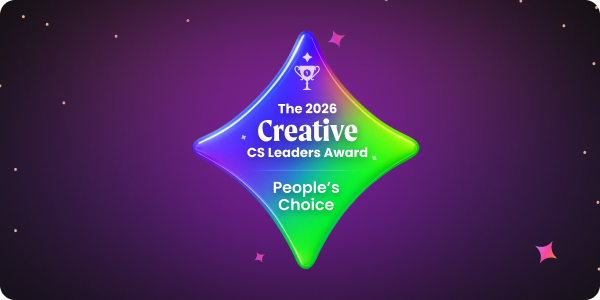Master SaaS customer onboarding to accelerate time-to-value and boost retention rates. B2B companies worldwide improve customer experiences through structured onboarding workflows, automated success plans, and self-serve portals that drive adoption.
When you buy a product or service, you naturally assume it’ll come with instructions on using and getting the most out of it. It’s no different with customers who invest in your product or service. They expect you to familiarize them with it, so they get all the benefits you sold them on.
Why is providing a good customer onboarding experience so crucial?
- Over 60% of customers say a business’s onboarding process factors into their purchasing decision, and 86% say they’d be more likely to stay loyal to a company if it offers educational and welcoming onboarding content post-purchase.
- Nearly 80% of B2B clients say technology has dramatically changed their expectations of how companies should interact with them.
A good customer onboarding process transitions customers from first-timers to long-term users of your product or service by giving them the tools they need to accomplish their goals in the way they hoped they would.
What is SaaS Customer Onboarding?
SaaS customer onboarding is essentially everything you do to help customers get up and running with your product or service. Sounds simple enough, right? Still, if you fail to get the new customer onboarding process right, you risk jeopardizing the chance of building the ongoing relationship you want.
The best SaaS customer onboarding experiences combine elements that occur in and outside your product to keep customers engaged while consistently giving them a reason to keep using it.
The 6 SaaS Onboarding Phases
Building satisfying customer onboarding experiences takes a whole lot of data and considered planning. One challenge to getting it right is that each product and service is unique, so each customer onboarding flow must be unique as well.
The six steps every SaaS client onboarding process follows are:
- Sign-up process. Do you see a higher-than-average drop-off rate in your sign-up phase? You might be asking for too much information. Asking only for absolutely necessary information reduces complexities and lowers the barrier to signing up. Often this is just a name, email, and password.
- The welcome email. A welcome email serves two purposes: it shows a customer you value their time, and it directs them back to your product so they can start using and getting value from it.
- First login. A customer might have already downloaded a product demo or viewed your product tour, but their first time logging in is when they get a full impression of your product. Giving customers a “quick win” provides a psychological boost that keeps them engaged and inspires them to continue using your product.
- Integrations and data imports. B2B products tend to have slightly more complex onboarding processes, as your product is now a part of your customer’s tech stack. To keep customers from getting frustrated, automate the integration and data import processes as much as possible and provide plenty of support.
- Product walk-through. The easiest way for customers to learn how your product works is for them to start using it as quickly as possible. Product walk-throughs are a great way to do this, as they rely less on “showing” and more on “doing.” Two product walk-through best practices are ensuring people can leave and come back later and, if they’re already familiar with your product, they can skip all or part of the process.
- Follow-up emails. Customer onboarding is an ongoing process that doesn’t end after the first successful login. Follow-up emails let you share tips and pointers for future sessions and prompt them to log back in. You can also get a ton of valuable feedback at the same time.
Top SaaS Onboarding Metrics To Track
Once a customer signs up and pays for your product, their expectations of seeing value from it as quickly as possible increase. Customer success teams can increase the speed at which customers start using a product by tracking critical SaaS onboarding metrics.
These five critical metrics help identify strengths and weaknesses in your onboarding experiences:
- Freed-to-paid version conversion rate.
- Time to complete onboarding.
- Time-to-value, or the amount of time a user spends finding the value of your product.
- User engagement, including the number of sessions and average session duration.
- Churn rate, or the rate at which users stop using your product.
The SaaS customer onboarding process is a transitional period where you teach customers to use your product to achieve their business goals. The more quickly you pass on that ability, the quicker your customers start experiencing value.




.png)

.png)




%20(1).png)
















.png)
.png)
.png)



.avif)





.png)
.png)







